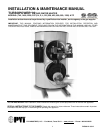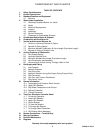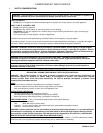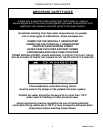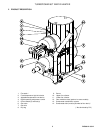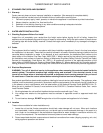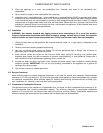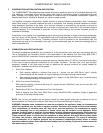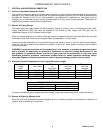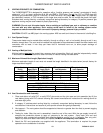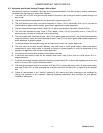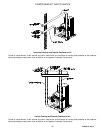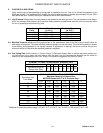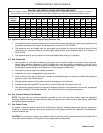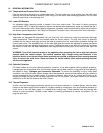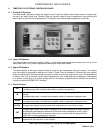TURBOPOWER 99
WATER HEATER
PV500-12 08/12 8
5 CONDENSATION NEUTRALIZATION AND DISPOSAL
The TURBOPOWER
®
99 condensing water heater will produce significant amounts of condensate because of its
high efficiency. Condensate occurs naturally when water vapor in combustion gases is cooled below the dew
point. Although only slightly acidic, the condensate is routed through a condensate neutralization system to
become lower the pH, allowing for disposal into a drain or sewer system.
The supplied condensate neutralization system contains a crushed limestone neutralization bath. Condensate
slowly flows through a crushed limestone bed and is neutralized, thus avoiding chemical treatment or dilution
using substantial quantities of tap water. Over time the limestone is consumed by this process and must be
replaced. Periodically test the condensate with a pH meter or pH paper and if lower than 5, the crushed limestone
must be replaced. If no condensate is observed, the main pipe containing the crushed limestone should be
inspected for blockage.
If the heater is not installed on a housekeeping pad to ensure gravity drainage, a means of removing condensate,
such as a pump, will be required. The neutralization bath and condensate trap are filled with condensate (water),
even when the heater is not running. Therefore, protection must be provided to the neutralization bath, the
condensate trap and to the condensate drain path, so that condensate does not freeze and damage parts or
block condensate flow.
6 COMBUSTION AND VENTILATION AIR
Provisions for adequate combustion and ventilation air to the mechanical room must be in accordance with the
“Air for Combustion and Ventilation” section in the latest edition of the National Fuel Gas Code, ANSI Z223.1
and/or CAN/CSA B149, Installation Codes or applicable provisions of the local building codes.
Equipment located in confined spaces requires two openings installed within 12” (300 m) from the top and bottom
of the room to assure adequate combustion air and proper ventilation. The total input of all gas utilization
equipment installed in the room must be used to determine the required minimum air volume needed for
combustion, ventilation and dilution of flue gasses.
1. All Air From Outdoors:
a. Each opening requires a minimum free area of 1 square inch
per 4000 Btu/hr input if directly
communicating with the outdoors or communicating to the outdoors through vertical ducts.
b. Each opening requires a minimum free area of 1 square inch
per 2000 Btu/hr input if communicating
with the outdoors through horizontal ducts.
2. All Air From Inside The Building:
Each opening requires a minimum free area of 1 square inch
per 1000 Btu/hr input, but not less than 100
square inches (0.06 m
2)
.
3. Combination Of Air From The Indoors And From The Outdoors:
Refer to National Fuel Gas Code, ANSI Z223.1 and/or CAN/CSA B149, Installation Codes or applicable
provisions of the local building codes.
NOTE: This unit may be installed with an optional remote air intake system which uses a make-up air duct to
draw combustion air directly from outdoors. (See Vertical and Horizontal Remote Air Section.)
WARNING: Adequate clean combustion air must be provided to the appliance. Under no circumstances
should the appliance ever be under a negative pressure. Particular care should be taken when exhaust
fans, compressors, air handling units, etc. may rob air from the appliance. The combustion air supply
must be completely free of any chemical or fumes, which may be corrosive to the appliance. Some
common chemical fumes to avoid are fluorocarbons and other halogenated compounds, most commonly
present as refrigerants or solvents, such as Freon, trichloroethylene, perchlorethylene, chlorine, etc.
These chemicals, when in contact with the equipment or when burned, form acids which quickly attack
the tubes, flue collector, stack and other appliance and auxiliary equipment. The result of inadequate
clean combustion air or negative pressure can be premature unwarranted product failure or unsafe
operation producing carbon monoxide that could escape into the building. Exposure to carbon monoxide
can lead to injury or death.



